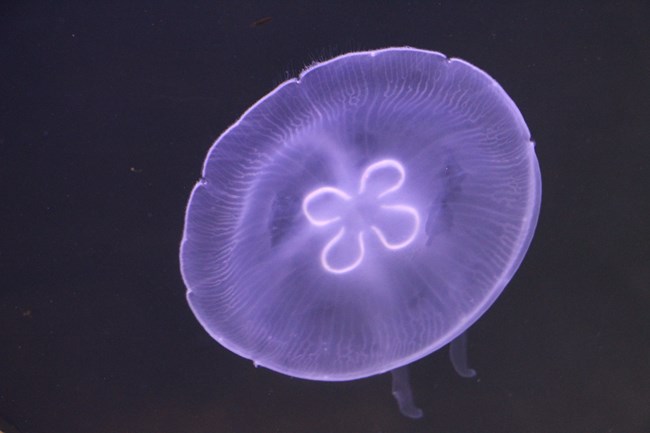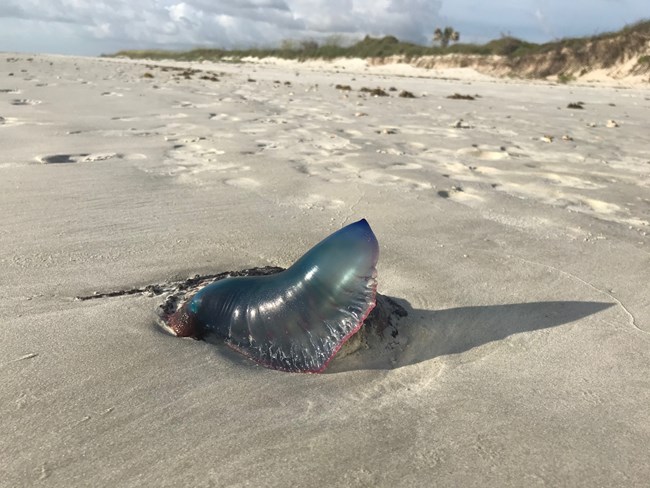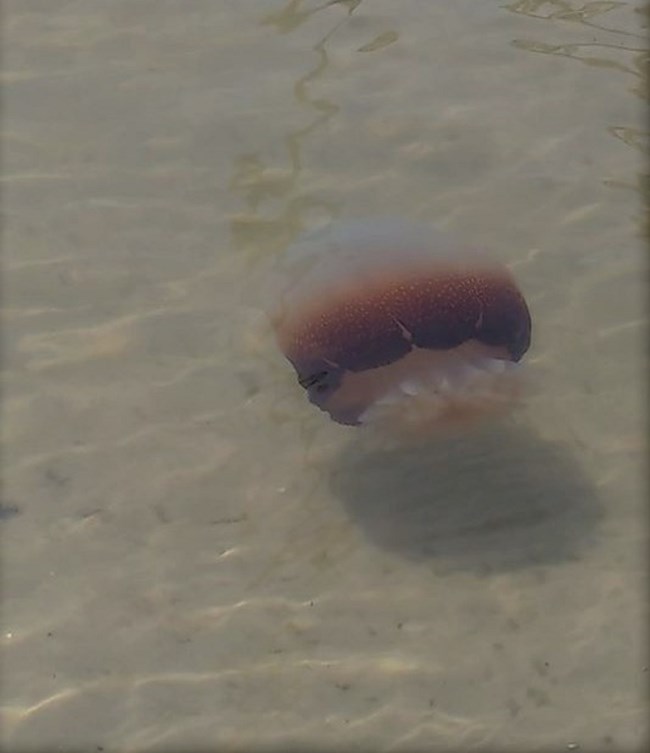and Jelly-like Organism
Jellyfish are frequently spotted washed up on the shore and capture many beachgoers’ interest. Many of these marine invertebrates possess distinct characteristics, such as a dome-shaped bell and tentacles that provide a stinging attack to hunt prey or provide defense. Jellyfish play a critical role in the food web, serving as food for birds and turtles. The most common jellies around Fort Matanzas are the Moon jelly, Cannonball jelly, and the Portuguese Man-o-War which is technically not a jellyfish but a siphonophore.

C. Leverett 

In case of a Jellyfish StingIf you get stung by a jellyfish, here are some remedies to ease the pain or reaction: · Remove excess tentacles with a credit card or tweezers · Rinse with sea water · Apply vinegar, rubbing alcohol or baking soda to help neutralize the sting · Seek medical assistance in case of an allergic reaction |
Last updated: June 28, 2023
